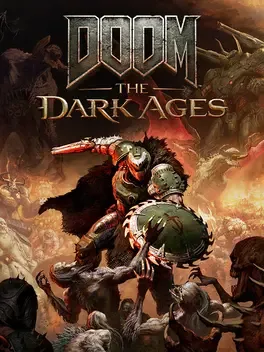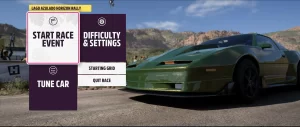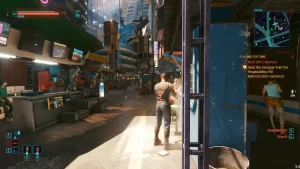The announcement of Doom: The Dark Ages has thrilled fans of the iconic franchise with its fresh medieval setting, brutal combat, and gritty aesthetic.
However, early builds and demo previews—particularly those available through beta access or internal developer versions—have revealed a concerning issue: frequent crashes.
As anticipation grows for this prequel to Doom (2016) and Doom Eternal, players and developers alike are working to uncover what’s causing these instabilities.
Crashes in modern games can result from a wide range of issues, from software conflicts to hardware limitations, and Doom: The Dark Ages is no exception.
The Current Crash Reports: An Overview
Players who’ve gained early access through closed beta programs or technical test builds have reported several types of crashes:
- Sudden application exits to desktop without error.
- Freezing during cutscenes or boss battles.
- Crashes triggered by loading specific environments or textures.
- Game hangs when switching between performance and quality modes on consoles.
While crashes vary depending on the system and configuration, patterns are beginning to emerge that suggest a handful of core culprits.
1. Unstable Game Engine Integration
Doom: The Dark Ages runs on the latest iteration of id Tech, the proprietary engine developed by id Software. While id Tech has long been praised for its performance and visual fidelity, pushing it into a new thematic and environmental direction may have introduced unforeseen complications.
Possible Issues:
- Resource-heavy medieval assets (such as dynamic lighting in castle interiors or weather effects) may not be fully optimized yet.
- Physics calculations involving large groups of enemies or destructible architecture could be straining real-time rendering pipelines.
- AI pathfinding in more vertical, maze-like medieval maps may be overloading processing resources.
In development terms, these are not uncommon for early builds. However, if left unresolved, they could persist into the final release.
2. Memory Leaks and RAM Overload
Memory management is critical in large-scale, high-fidelity games. Several reports suggest that Doom: The Dark Ages is exhibiting symptoms of memory leaks—a scenario where RAM usage continues to climb during gameplay without being properly released, eventually crashing the system.
Indicators:
- Game stutters increase the longer a session is played.
- Performance dips are followed by sudden shutdowns.
- On PC, users note that memory usage in Task Manager steadily rises until a crash occurs.
Contributing Factors:
- Inefficient garbage collection in the engine’s scripting layer.
- High-resolution textures not being offloaded properly.
- Audio loops or ambient sounds failing to release memory after level transitions.
3. GPU Driver Incompatibility
Given the fast-paced nature of Doom games and their reliance on advanced rendering techniques, graphics card drivers are often a key part of stable performance. Early testers using both NVIDIA and AMD cards have reported crashes tied to rendering problems.
Symptoms:
- Screen flickering or tearing just before a crash.
- Black screens during loading sequences.
- Crashes when ray tracing is enabled or when adjusting anti-aliasing settings.
Likely Causes:
- Drivers not yet optimized for the game’s rendering API (likely DirectX 12 or Vulkan).
- Shader cache errors or conflicts with precompiled effects.
- GPU-specific bugs that require vendor collaboration to resolve.
It’s worth noting that many AAA games require GPU vendors to release a “Game Ready” driver close to launch, and Doom: The Dark Ages will likely benefit from similar optimization before release.
4. Console-Specific Instability
Though PC users report the majority of crashes, console players—especially on PlayStation 5 and Xbox Series X—have experienced platform-specific bugs. These include crashing during resolution changes, controller input loss, and instability in Quick Resume functionality (Xbox).
Common Problems:
- Game restarts after being paused for extended periods.
- Audio desync followed by freeze on cutscene transitions.
- Crashes after switching between display modes (e.g., Performance to Fidelity).
Platform Differences:
Because console operating systems handle memory and asset streaming differently than PCs, even well-optimized games may behave unexpectedly if they haven’t been thoroughly tested on console hardware. This phase often gets refined late in the development cycle.
5. Overclocking and Unstable User Settings
Some user-side crashes stem from aggressive system configurations. Many PC gamers use overclocked CPUs or GPUs, custom refresh rates, and exotic hardware combinations—all of which can destabilize beta versions of games.
Warning Signs:
- Crashes that only occur with overclocking enabled.
- Instability when running the game above 144Hz refresh rate.
- Conflicts with third-party software like RGB controllers or hardware monitors.
In these cases, the game may not yet have the robustness to adapt to extreme setups, and users are advised to revert to stock settings while testing early builds.
6. Background Application Conflicts
It’s common for background processes to interfere with newer games—especially betas. Some users have found that overlay software, VPNs, or even antivirus programs can trigger crashes in Doom: The Dark Ages.
Software to Watch:
- Discord overlays or NVIDIA GeForce Experience.
- MSI Afterburner and Rivatuner.
- Antivirus suites that scan live game files or block file writes.
Disabling non-essential programs before launching the game often improves stability during early access phases.
Developer Response and Patch Expectations
id Software and Bethesda have acknowledged the instability issues, and multiple patches are expected before and after launch. The development team is likely gathering crash logs and telemetry data from beta testers to isolate key problem areas.
Likely Fixes:
- Engine optimizations for better memory management.
- Collaboration with GPU vendors for driver updates.
- Stability patches for console and cross-platform syncing.
Players are encouraged to report issues via official support forums and include system specs, crash logs, and any patterns they observe.



